Hyundai is a South Korean car manufacturing company established in 1967. After its success as an assembler of Ford Cortinas, it eventually moved on to manufacturing its own cars, leading to exporting its vehicles to America and the rest of the world. Generally known for being efficient and cost-effective while incorporating advanced technology, it has become one of the most recognized car brands in the world.
Who Owns Hyundai Now?
Hyundai Motor Company is a publicly traded company so it is owned by shareholders.
The major shareholders are:
- Hyundai Mobis: 21.86% (largest shareholder)
- National Pension Service: 7.15%
- Chung Mong-koo: 5.44% (former chairman)
- Chung Eui-sun: 2.67% (current Executive Chairman)
Hyundai's Iconic Cars
Let's take a look at Hyundai's journey so far in the automotive industry!
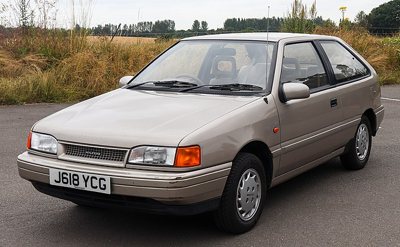 Hyundai Pony - The First
Hyundai Pony - The First
In 1975 Hyundai introduced the Pony - a small yet reliable vehicle to South Korean consumers. It is regarded as the first vehicle designed and manufactured in the country. It immediately made waves because it was affordable, reliable and perfect for daily transportation. It was only 159.3 inches long and 61.4 inches wide with a 1.2L I4 engine that gave the car a maximum top speed of 93 mph.
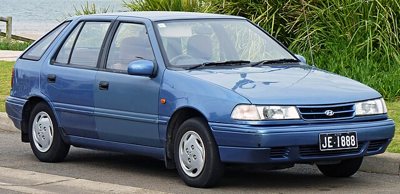 Hyundai Excel - Starting Strong in the US Market
Hyundai Excel - Starting Strong in the US Market
It would take more than a decade before Hyundai would debut in the US market and they arrived with a bang by introducing the Hyundai Excel. It was the perfect vehicle to introduce in 1986 to consumers since it was priced competitively. It was a great daily driver with average top speed of 99 mph and it came with automatic transmission making it a lot easier to drive by an average consumer. More than 168,000 Excel was sold in its first year alone.
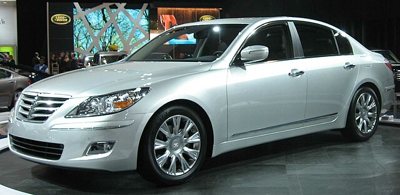 Hyundai Genesis - The Introduction of Luxury
Hyundai Genesis - The Introduction of Luxury
Since its introduction to the US market in 1986, Hyundai continues to stay competitive in the market with their budget friendly, reliable vehicles. In 2008, the company introduced something different - a luxury vehicle that could compete with other brands. Powered by a 3.8L V6 or 4.6L V8 engine, the Hyundai Genesis features a top speed of 149 mph.
Size-wise, the luxury sedan is 195.9 inches long and 73.4 inches wide. For premium driving experience, the Hyundai Genesis comes with on-board navigation system, premium sound for music and adaptive cruise to ensure riding safety. Because of its success, Hyundai decided to use Genesis as its brand for their luxury vehicles.
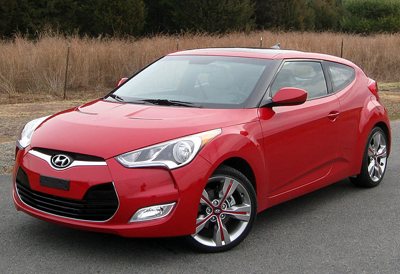 Hyundai Veloster - Hyundai's First Hatchback
Hyundai Veloster - Hyundai's First Hatchback
In 2012, Hyundai decided to enter the hatchback market with the Hyundai Veloster. It's a sleek, sporty vehicle with impressive top speed at 140 mph through its 1.6L Turbo I4 engine. The hatchback is 167.9 inches long and 70.5 inches wide. It comes with the standard modern features from Hyundai especially the touchscreen infotainment system.
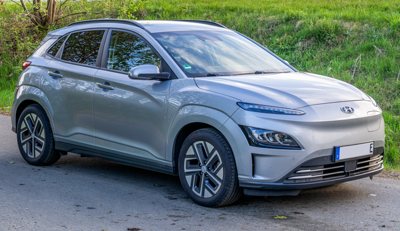 Hyundai Kona Electric - First Look into the Future
Hyundai Kona Electric - First Look into the Future
In 2019 Hyundai was also investing heavily in EV and the Kona Electric was their first foray into this category. It's not as fast compared to other modern EVs with only 104 mph top speed but it is energy efficient since it can go up to 258 miles on a single charge. The Kona Electric is 164.6 inches long and 70.9 inches wide. The first EV comes with fast charging, a totally digital cockpit and driver assist assistance for ease of driving and safety.
Hyundai Elantra - The Most Popular Hyundai Model
The success of Hyundai as a car manufacturer is based on its ability to produce reliable vehicles that are priced competitively. But when it comes to their most successful model, Hyundai Elantra is the undisputed king. Introduced in 1990, this stylish sedan is built for comfort and safety.

The following are the top and noteworthy models:
- Elantra J2 - The Elantra was introduced in 1990 to replace the Hyundai Stellar and it gained significant success on its 2nd edition. The Elantra J2 is a 174.4 inches long, 67.1 inches wide sedan with 1.8L I4 engine and top speed of up to 125 mph. It came with improved crash protection and airbags.
- Elantra MD - in 2012, Hyundai introduced the Elantra MD and it became the 2012 North American Car of the Year with its impressive engine (1.8L I4) upgraded dimensions (178.3 inches/69.9 inches) and impressive interior features such as a completely touchscreen navigation panel. It's also noted for its fuel efficiency and use of LED lighting for better road navigation.
- Hyundai Elantra Hybrid - Speaking of fuel efficiency, the 2020 Hyundai Elantra Hybrid is a top choice. Using a 1.6L Hybrid engine, it's a 56mpg vehicle with top speed of up to 125 mph. The car measures184.1 inches in length and 71.9 inches in width.
- Elantra (2025) - The 2025 Elantra has a 2.0L Inline-4 engine which produces 147 horsepower and EPA combined fuel efficiency of 34 MPG. It measures 185.4 inches in length, 71.9 inches in width, and 55.7 inches in height. Cool features like adaptive cruise control, dual-zone climate control, and comprehensive safety systems make this model the leader of the pack.
The Size Evolution Of Hyundai Elantra
There have been 7 generations of the Hyundai Elantra since its introduction in 1990.
- First Generation (1990-1995): Length - 174.4 inches; Width - 67.1 inches; Height - 54.3 inches
- Second Generation (1995-2000): Length - 177.4 inches; Width - 67.9 inches; Height - 55.1 inches
- Third Generation (2000-2006): Length - 178.3 inches; Width - 67.9 inches; Height - 56.1 inches
- Fourth Generation (2006-2010): Length - 177.4 inches; Width - 69.9 inches; Height: 58.3 inches
- Fifth Generation (2010-2015): Length - 178.3 inches; Width - 69.9 inches; Height - 56.5 inches
- Sixth Generation (2015-2020): Length - 181.9 inches; Width - 70.9 inches; Height - 56.5 inches
- Seventh Generation (2021-Present): Length - 184.1 inches; Width -71.9 inches; Height - 55.7 inches
The Hyundai Elantra has grown in size over the years, adapting to market demands and technological advances.
Hyundai's Future and More
Hyundai is not shy about its future ambitions as they are aiming to be one of the top EV manufacturers in the world with a target of 17 types of EVs to be introduced by 2030. Hyundai is also pushing for EREVs or Extended-Range EVs that can reach 560 miles in a single charge. Aside from EVs, Hyundai is also focused on advancing their hybrid vehicles as well as working on the use of hydrogen fuel cells.
